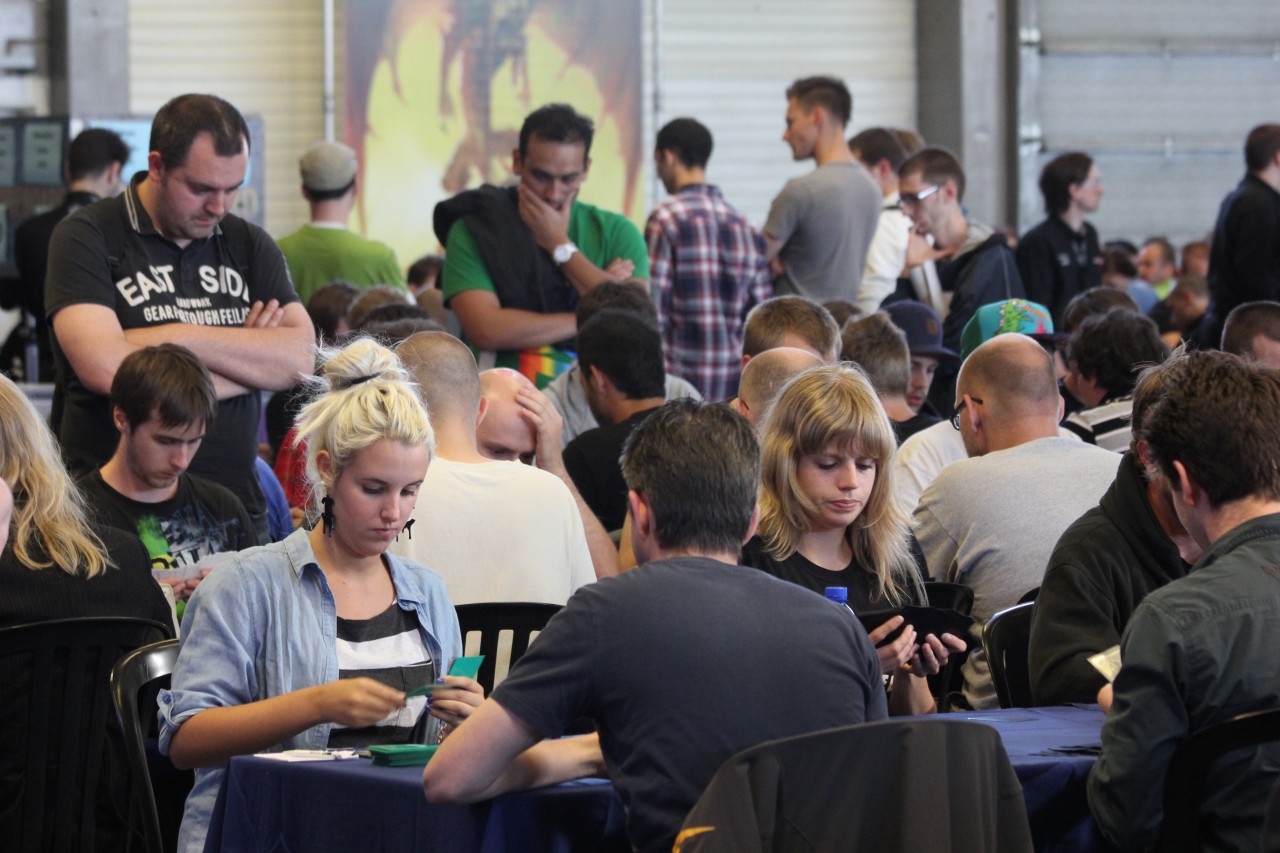Magic: The Gathering: A Brief Primer

In a given game of Magic, two players, in the diegetic role of magic-wielding Planeswalkers, compete to reduce each other’s life counters to zero through the employment of various cards cast as spells representing creatures, artifacts, events, and so on. These cards might deal damage to the opposing player or to their creatures, affect or modify the steps in each game turn, or strengthen or weaken other cards.
Each player generally builds their own deck of 60 or more cards, although there are pre-constructed decks that players can purchase (and some of these were used in our study, as described later in this text). Beyond the 60-card minimum deck size requirement, the only other general restriction for deck construction is that only a maximum of four copies of any single card (distinguished by card name) can be included, with the sole exception of basic land cards, of which any number can be included.
Brief aside: there are five colors used to describe and categorize cards in Magic, with certain kinds of mechanics generally associated with some colors rather than others (see "Play Styles" for more). The colors, with their common abbreviations, are White (W), Blue (U), Black (B), Red (R), and Green (G), although some cards may be colorless or have multiple colors. Many players attempt to combine multiple colors in an effort to capitalize on particular card and mechanics combinations.
Each game round, a player has the opportunity to play a land card and thus add to their mana reserves (the economic currency used to pay for all other cards) and play any other cards he or she can afford via those mana reserves. The player has an opportunity to attack their opponent with one or more of their cards, who may decide whether or not to block that attack with their own cards. This simple routine continues (with some specific procedural constraints) until one player’s life counter has been reduced to zero by the opponent’s attacks.
This brief official introductory explanation and tutorial video (Magic: The Gathering, 2017) provides players new to Magic with some basic examples of gameplay. While the video does not cover the entire breadth of card types or mechanics, it serves to demonstrate the most common and straightforward play experience, allowing players to get an initial sense of the game’s generic conventions and qualities.
A similar brief introduction to Magic’s rules and gameplay can be read as an HTML document rather than experienced as video.
However, despite the simple and somewhat reductive description of the essential game flow that we have provided, there are many exceptions to the procedure that open up possibilities for interesting protocological emergence and execution. As Katie Salen and Eric Zimmerman (2004) noted:
Magic contains a simple set of rules to resolve creature attacks, but individual cards detail many special kinds of creatures, such as walls, which can only defend, or flying creatures, which can bypass any non-flying defending creatures. These "exceptions" lead to new creature-combinations, such as flying walls, which can intercept flying creatures, but can only defend. This kind of classificatory complexity, combined with variability in creature "stats" (casting cost, attack rating, defense rating, color type) plus numerous other "special case" abilities, makes for thousands of different kinds of possible creatures. And creatures are only one of several types of Magic cards! (p. 484)
That is, despite the game’s fundamental structure, the number and variety of cards—along with specific and unique exceptions to one or more of the game’s basic rules—means that any game has the potential (if not the likelihood) to provide a wildly different experience than might be realized in any other iteration of the game.
That said, many—if not most—gaming communities develop local metagame ecologies, where particular card-usage or deck-building strategies gain or lose popularity as the players in a given community (e.g., a local play group) develop certain tactics to anticipate the tactics and play styles of the other active players in that community. In such cases, it can be quite common for the breadth of actual Magic games to narrow, at least temporarily, as particular focus is turned toward those strategies most popular or effective among the members of individual communities. Of course, it is just as common for players’ experiments with innovative card combinations—usually in order to overcome a particularly effective deck in the community—to widen the range of possible games, as players try out ideas they might otherwise not have been spurred to consider. As Salen and Zimmerman (2004) described it, "The complexity of Magic doesn’t come from [its] core rules but instead from the many special cases that the thousands of different cards make possible" (p. 484). In other words, it is the game’s rhetorical capacity for potential expression and action that drives its continued play, development, and popularity.